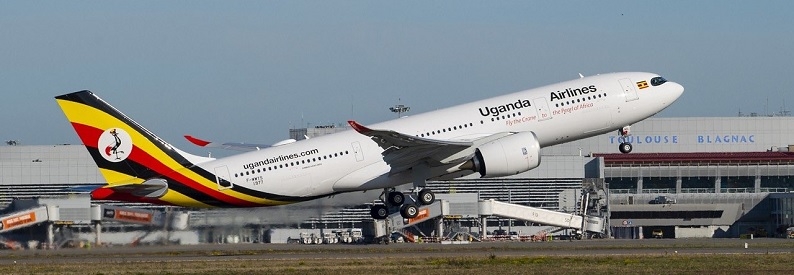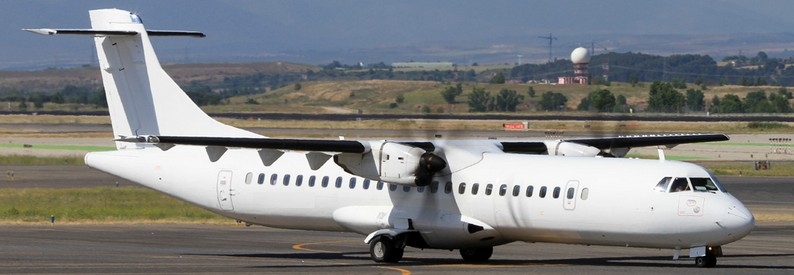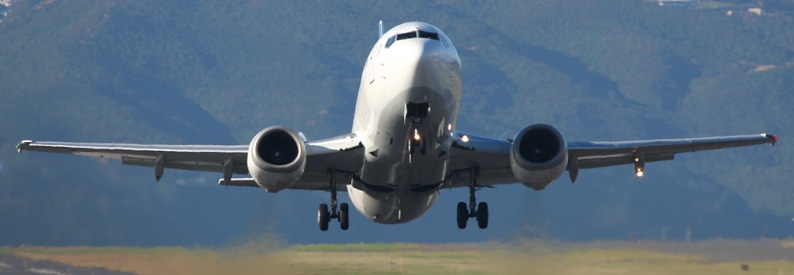Uganda Airlines (UR, Entebbe) has denied it is indebted as claimed in a recent report by the country’s Auditor General, saying its revenues have been 10% below budget for the six months it has been flying, despite the impact of the COVID-19 pandemic.
“Uganda Airlines is fully capitalised by the shareholders and has no debts on its balance sheet. All the aircraft and other assets were paid for by cash from the shareholders. Uganda Airlines, therefore, does not have any loans or interest payments to any financier,” the state-owned carrier said in a statement.
This followed after the Auditor General Report to Parliament for FY2018/19 and FY2019/20 found Uganda Airlines' debt ratio was 2.37% as of June 2020 and -608.7 times interest cover, noting the company may have challenges meeting its interest obligations. Interest cover looks at how many times a company’s operating profits exceed its interest payable. A cover of two times and above is usually considered to be safe. The report highlighted the airline had UGX168 million Ugandan shillings (USD45,815.42) in interest financing costs on a loss after tax of UGX102.4 billion (USD27.4 million) for FY2019/20.
According to the Auditor General, the company was unable to realise its planned revenue, yet the expenditure on operations was way above projected costs. The company had only realised USD9.9 million (10.8%) of the projected revenue of USD92.8 million. It said the carrier had incurred expenses that were beyond the planned costs and its actual revenue. It had spent USD29.2 million on direct costs and USD3.6 million on indirect costs, as a result incurring the net loss of USD27.4 million in the year.
The report further highlighted that the airline’s business plan was not implemented in accordance with the planned timelines. Whereas the government had invested a total of UGX 934.8 billion (USD254 million), only an amount of UGX200 million (USD54,530.42) was shown as share capital in the company statements, the rest of the amount was shown as share application funds.
In a “fact check” statement, Uganda Airlines explained the UGX102.4 billion loss during FY2019/20 had been due to lack of activity due to the grounding of its aircraft because of the country’s COVID-19 lockdown.
A further UGX15 billion loss in FY2018/19 had been incurred during the pre-operation period from January 30, 2018 to June 30, 2019, when the airline had just been incorporated and was investing in its set up activities and was not flying. It had not yet obtained an AOC in order to mount flights and open routes. “The costs of investing in aircraft, purchasing tools and equipment, setting up and performing all the activities needed to secure licences, skills, competencies, and systems are what is recorded for this period.”
“Purchase orders for both aircraft types in the plan, (four CRJ900LRs and two A330-800Ns) were placed during this period and deposits paid, so that the manufacturing processes could begin. Aircraft manufacturing and assembly takes a period of one year for the regional CRJ900 aircraft and two years for the widebody A330s,” the airline said.
Chief Executive Officer Cornwell Muleya declined to comment on queries from ch-aviation why Uganda Airlines had not deferred the order for the two A330-800s in light of the losses sustained. He also declined to comment on a reported delay in the certification of the aircraft by the Uganda Civil Aviation Authority.
The Auditor-General Report report for the second period covered the year from July 1, 2019, up to June 30, 2020. During this time, the airline had obtained its AOC in August 2019 and had started commercial flights on August 28, 2019, with its first two CRJ900s. It had received the second set of CRJ900s in September 2019 and using the four aircraft had opened eight regional routes to Nairobi Jomo Kenyatta, Juba, Mogadishu, Bujumbura, Dar es Salaam, Kilimanjaro, Mombasa, and Zanzibar by December 2019.
The pandemic had led to the closure of air space in Uganda between March 23 and June 30 2020. “Therefore, over the full 29 months covered by the two reports from the Auditor General, the airline could only perform commercial flights for six of those months. Most of the period was dedicated to investing and set up activities to ensure Uganda Airlines exists as an international airline, and the rest of the time aviation markets were closed,” the airline said.
“The financial position of the airline at this early stage reflects the initial investment in aircraft, tools, and equipment as well as the set-up cost structures for a modern international airline. This will then be balanced with revenues when all start-up processes are completed, routes, and markets are opened. Whereas aircraft purchases bring in the capability for airline operations, these high-cost investments, at the same time must be amortised to the income statement every year as per the accounting rules,” the statement concluded.






